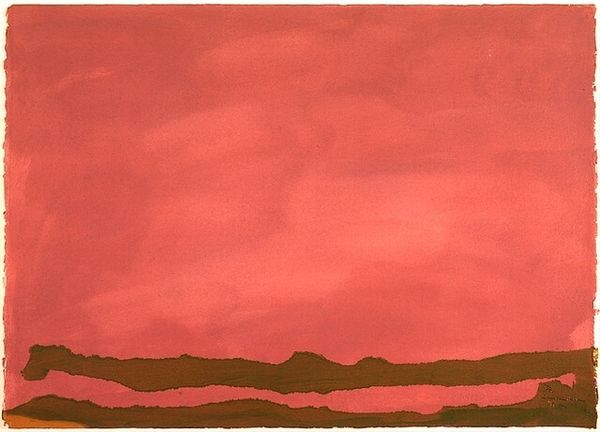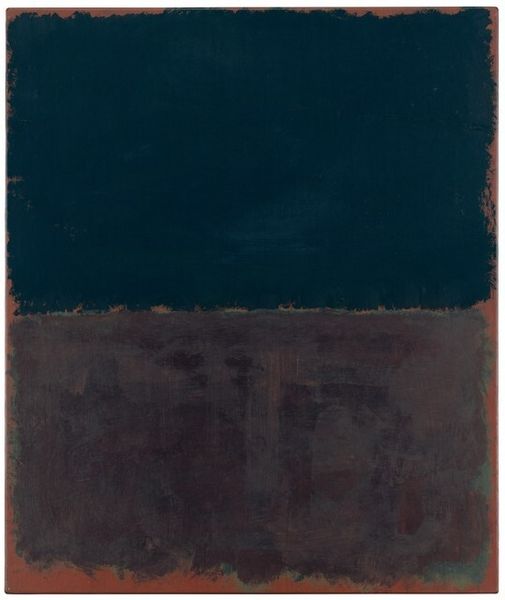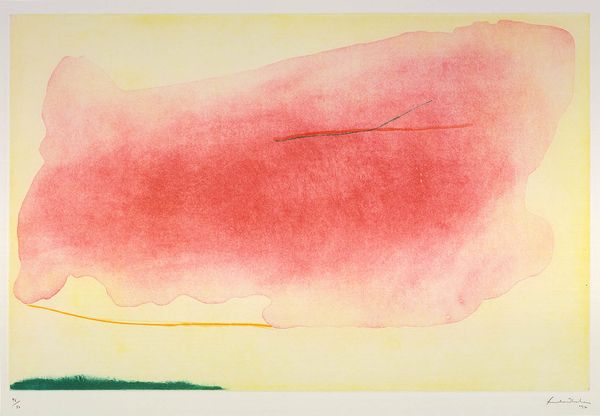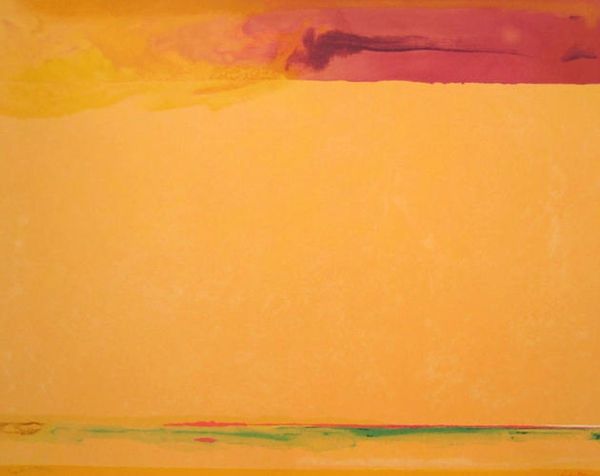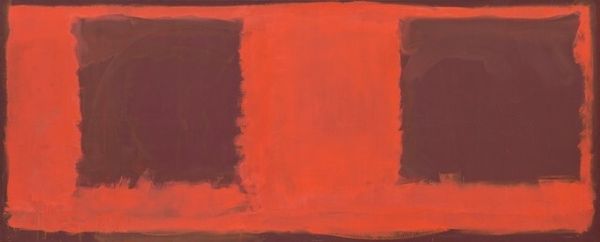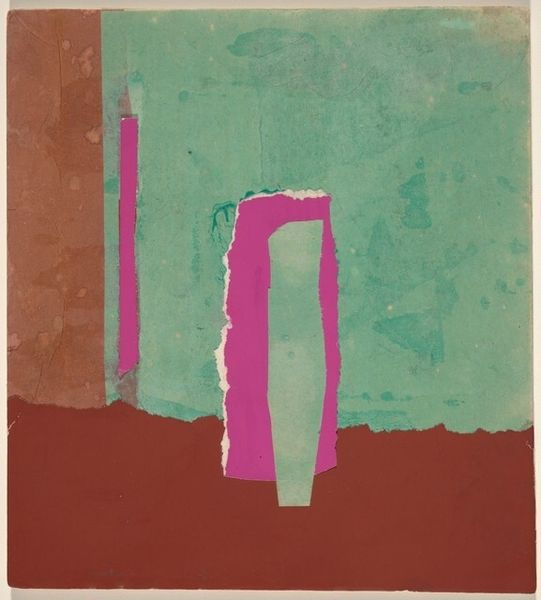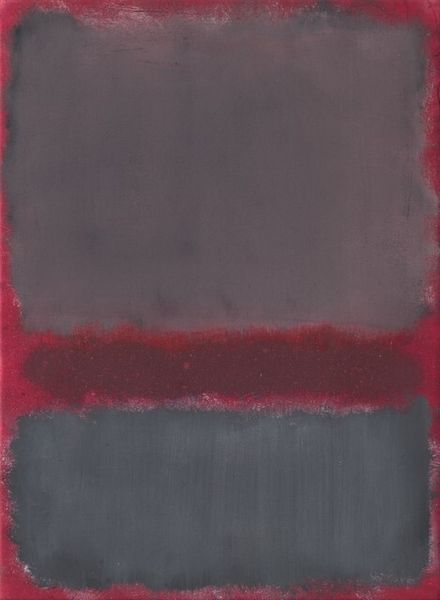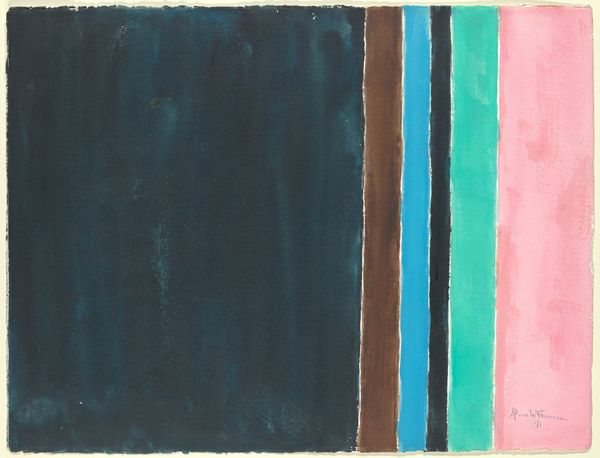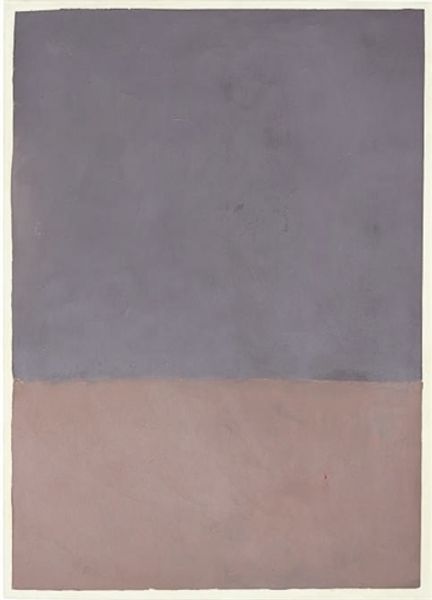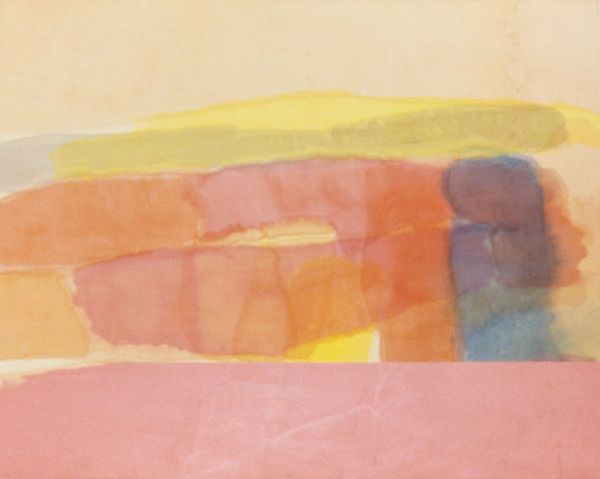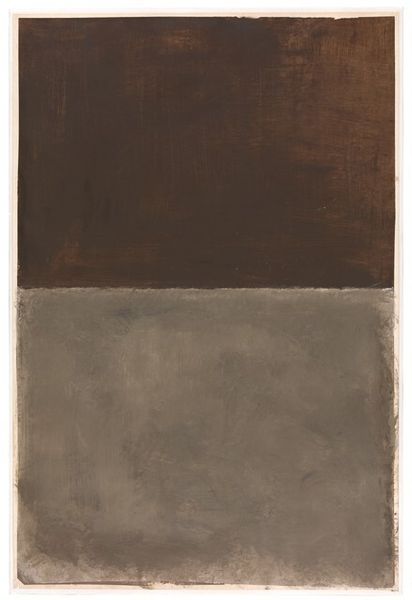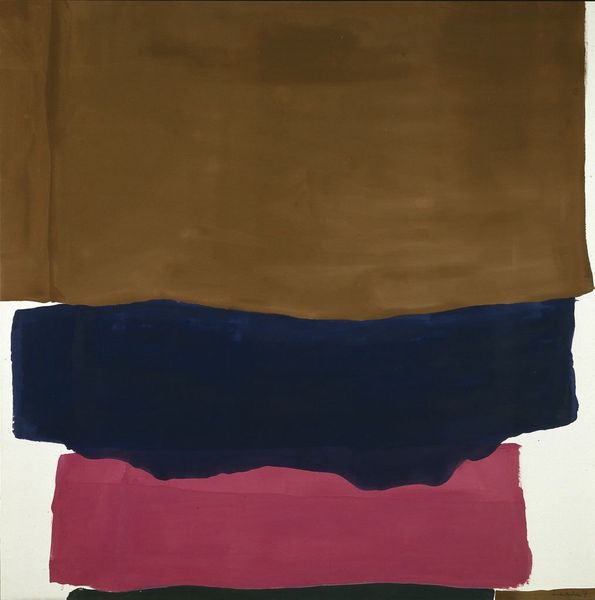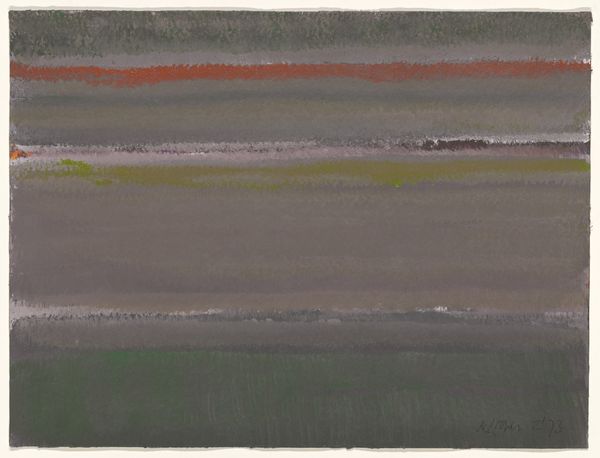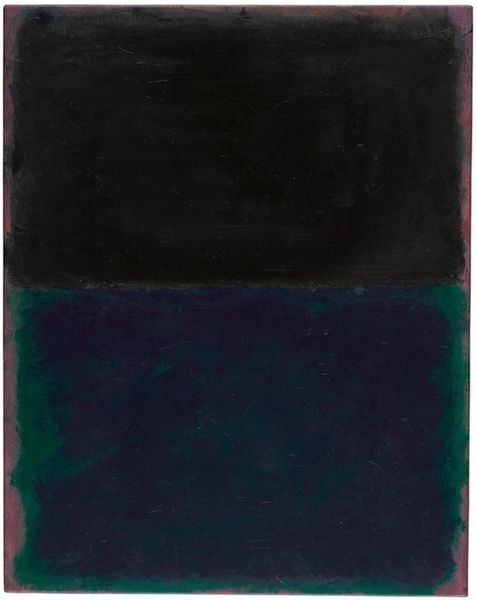
ink
#
photo of handprinted image
#
natural stone pattern
#
rippled sketch texture
#
naturalistic pattern
#
random pattern
#
pattern background
#
ink
#
pink
#
linocut print
#
organic pattern
#
imprinted textile
#
layered pattern
Copyright: Helen Frankenthaler,Fair Use
Editor: This is Helen Frankenthaler's "Green Likes Mauve," created in 1970 using ink. I find the way the color seems to stain the paper incredibly peaceful. It's such a minimalist landscape, but also quite evocative. What do you see in this piece? Curator: Well, immediately I'm thinking about the socio-political context of 1970. This was a time of intense social upheaval, protest against the Vietnam War, and burgeoning feminist movements. Knowing this, consider the subtle ways Frankenthaler challenges the traditionally masculine-dominated art world through color-field painting, which in itself democratizes the medium of paint. Editor: Democratizes how? Curator: By moving away from overtly heroic or dramatic subjects. Instead, we see this, well, quiet dialogue between colors. Frankenthaler’s process becomes part of the piece. It isn’t necessarily “about” something representational in the conventional sense. It invites more viewers in by its ambiguity. Consider who historically had access to galleries, to understanding painting techniques; Frankenthaler is moving away from elitism here. The inks soak into the paper, making the color part of the surface itself. Does that suggest something to you about the perceived roles of female and male artists at that time? Editor: So, are you saying she's using abstraction to make a political statement about inclusivity? That the lack of defined form encourages openness? Curator: Precisely! The visual language becomes about challenging expectations, creating space for alternative voices and experiences. It moves the locus of the artwork to public participation, which also means a larger societal shift in the art's role. What about the title, “Green Likes Mauve”? Do you think it is suggesting a relationship or creating space for some conflict, or negotiation of sorts? Editor: That's a fascinating point. It definitely reframes my perspective on this painting. It's much more complex than just a simple landscape now. Thanks! Curator: My pleasure! It's important to look beyond the aesthetic and see the dialogue it sparks about art's role in culture.
Comments
No comments
Be the first to comment and join the conversation on the ultimate creative platform.
